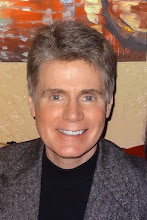Chad__CHAPTER__1&2
Hidden between the lines in Chapter 1 is the suggestion that the oral tradition is richer in authenticity than the written word.
This idea folds into an assertion in Chapter 2 that: "Stories are 'more true' than facts because stories are multidimensional."
These points work in tandem to argue the human brain is more open to influence when engaged in a multidimensional activity.
In the case of a person listening to a live story performance, many sensory inputs interact with the brain. The storyteller mixes orality with nonverbal language and the content of the story itself to encounter his audience on three levels.
Is influence a simple matter of approaching the audience with multidimensional information, or is there another factor at work?
Labels: Chad


4 Comments:
I can't say for sure if there is another factor at work, but I do believe that multidimensionality plays a vital role in the influential power of stories. I think most people are more prone to absorb information if it's wrapped in a pretty package. Remember the Nixon/Kennedy debate? If you only listened, they were probably evenly matched, but because Nixon, frankly, looked like shit, Kennedy came out on top. Or what about Hitler? He overthrew an entire government system just because he had charisma. People were willing to overlook the violence that came along with him because he knew how to talk to the masses. Multidimensional elements play a vital role in how influential a story will be.
"Authentic" stories under this definition seem to be adjudicated in the court of relativism and facts are being questioned as less than absolutes. Tis said, people do buy on emotion and not logic.
That just helps justify digital storytelling even more. Moving images and sound engage the senses and play quite well on emotions.
I love the Nixon vs Kennedy debates. The medium was still new and that ended up tricking Dick. That and I think he was feeling the effects of the flu. There's an "emotion" we don't need to share.
I think that there is a je ne sais quoi factor. Maybe it's not calculable or tangible, but it certainly goes without saying that there is something that people are constantly looking for, that they can't exactly describe, but know when they see it.
Take for example our past, and maybe future, presidents. Most have been tall, dark and more-or-less handsome... sorry Dennis Kucinich. They look like someone who could talk to world leaders. They look powerful. Likewise, I once read that most Fortune 500 CEOs are over 6 feet tall.
If you don't look trustworthy, people won't trust you. If you don't look authentic, people won't buy it.
Post a Comment
<< Home